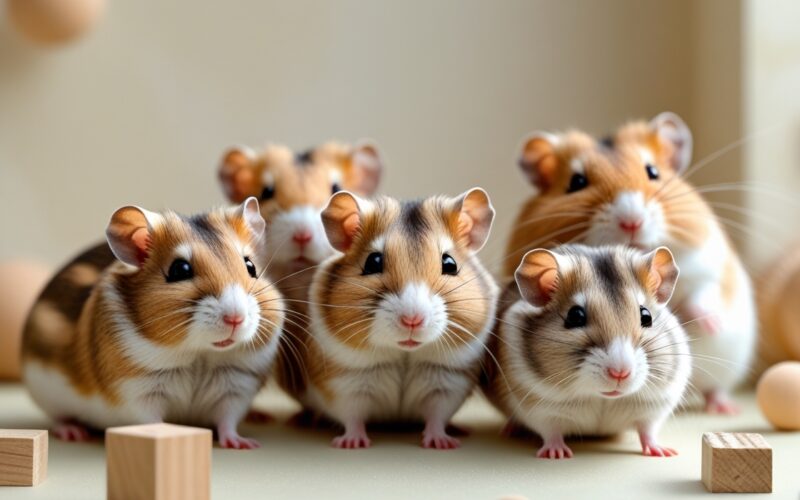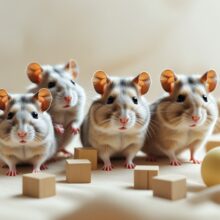History and Origin of Gerbils

History and Origin of Gerbils
Gerbils are fascinating little creatures that have captured the hearts of pet enthusiasts around the world. But their history and origin tell an equally intriguing story. Gerbils, belonging to the family Muridae, are small rodents native to various arid regions of Africa, Asia, and India. The most commonly known and domesticated species is the Mongolian gerbil (Meriones unguiculatus). To understand the history and origin of gerbils, it’s essential to delve into their natural habitats, their discovery by scientists, and their journey from wild rodents to beloved household pets.
Natural Habitats
Gerbils are primarily found in arid and semi-arid regions, where they have adapted to survive in harsh conditions. The desert environment is characterized by extreme temperatures, low humidity, and limited water sources. These rodents have evolved various physical and behavioral traits that allow them to thrive in such challenging environments.
Africa: In Africa, gerbils are found in regions stretching from the Sahara Desert to the savannas. Species like the Fat-Tailed Gerbil (Pachyuromys duprasi) and the Egyptian Gerbil (Gerbillus pyramidum) are native to North Africa. These gerbils have adapted to burrowing in sandy soils to escape the heat and predators.
Asia: Asia is home to several gerbil species, including the Mongolian gerbil, which inhabits the steppes and deserts of Mongolia and northeastern China. These regions experience harsh winters and hot summers, necessitating gerbils’ ability to dig elaborate burrow systems for shelter and temperature regulation.
India: In India, gerbils such as the Indian Desert Gerbil (Tatera indica) are found in arid regions. These gerbils are well-adapted to the dry conditions and are known for their impressive burrowing capabilities.
Discovery and Scientific Study
The scientific study of gerbils began in the late 19th and early 20th centuries. European and American naturalists and zoologists started documenting the various species of gerbils they encountered during their explorations of Africa, Asia, and the Middle East.
Early Documentation: The first scientific descriptions of gerbils date back to the mid-1800s. Naturalists such as John Edward Gray and George Robert Waterhouse described several species based on specimens collected during expeditions. These early descriptions laid the foundation for future research and classification of gerbil species.
Taxonomy and Classification: As more species were discovered, taxonomists began classifying gerbils based on their physical characteristics and geographic distribution. The family Muridae was established, encompassing gerbils, mice, rats, and other rodents. Within this family, gerbils were grouped into several genera, including Meriones, Gerbillus, and Tatera.
Laboratory Use: In the mid-20th century, gerbils gained attention for their potential use in scientific research. The Mongolian gerbil, in particular, became a popular subject for studies on behavior, endocrinology, and neurology. Their relatively simple care requirements, docile nature, and unique physiological traits made them valuable laboratory animals.
Domestication and Popularity as Pets
The journey of gerbils from wild rodents to popular pets began in the mid-20th century. The Mongolian gerbil played a crucial role in this transition.
Introduction to the West: In the 1950s, Dr. Victor Schwentker, an American scientist, imported Mongolian gerbils to the United States for research purposes. These initial gerbils were bred in captivity, and their offspring were distributed to other laboratories and research institutions. As scientists and researchers worked with these gerbils, they recognized their suitability as pets due to their friendly and inquisitive nature.
Rise in Popularity: By the 1960s, gerbils started appearing in pet stores across the United States and Europe. Their small size, ease of care, and entertaining behaviors made them popular choices for families and children. Gerbils quickly gained a reputation as low-maintenance pets that provided companionship and amusement.
Breeding and Varieties: Selective breeding of gerbils led to the development of various color morphs and patterns. Originally, Mongolian gerbils had a natural agouti coloration, but breeders began producing gerbils in colors such as black, white, lilac, and pied. These diverse colorations further increased the appeal of gerbils as pets.
Modern Day Gerbils
Today, gerbils are cherished pets in households around the world. Their popularity continues to grow due to their engaging personalities and manageable care requirements. Gerbil enthusiasts have formed communities and organizations dedicated to promoting the well-being and understanding of these delightful rodents.
Gerbil Shows and Competitions: In many countries, gerbil shows and competitions are held where enthusiasts can showcase their gerbils and exchange knowledge about breeding, care, and health. These events foster a sense of community and encourage responsible pet ownership.
Education and Awareness: Efforts to educate the public about gerbil care, behavior, and health have led to improved standards of care for pet gerbils. Resources such as books, websites, and social media groups provide valuable information to gerbil owners, ensuring that these pets receive the best possible care.
Conservation: While pet gerbils are bred in captivity, wild gerbil populations face threats from habitat loss and human activities. Conservation efforts aim to protect the natural habitats of gerbils and other small rodents, ensuring their survival in the wild.
Conclusion
The history and origin of gerbils are marked by their remarkable adaptations to arid environments, their discovery and study by scientists, and their eventual domestication as beloved pets. From the deserts of Africa and Asia to homes around the world, gerbils have made an incredible journey. Understanding their history not only enriches our appreciation of these charming rodents but also underscores the importance of responsible pet ownership and conservation efforts.



